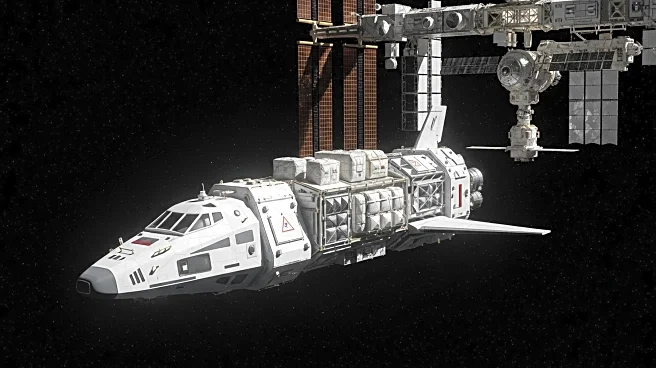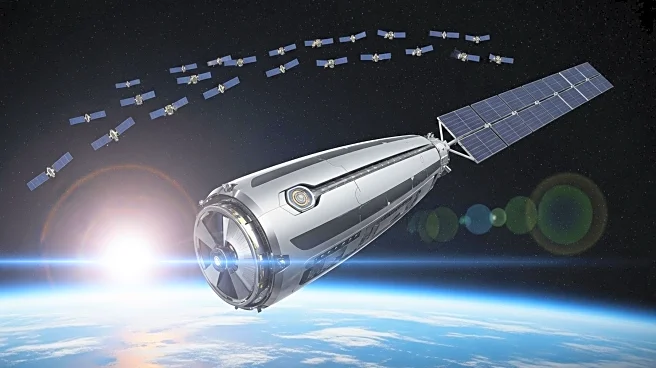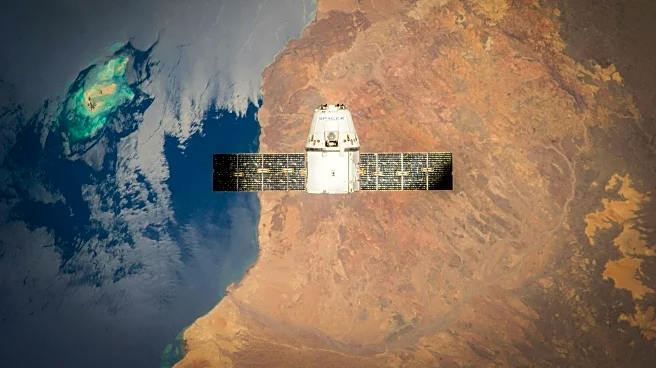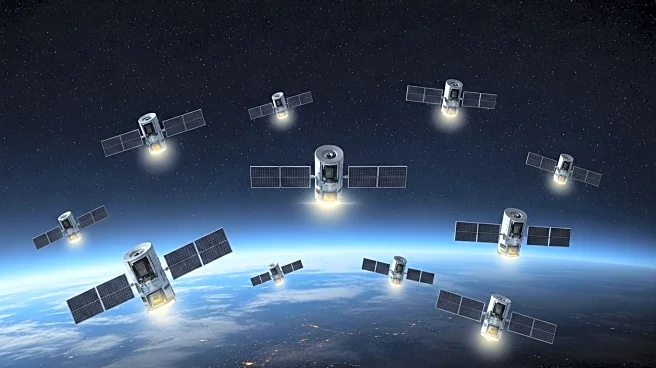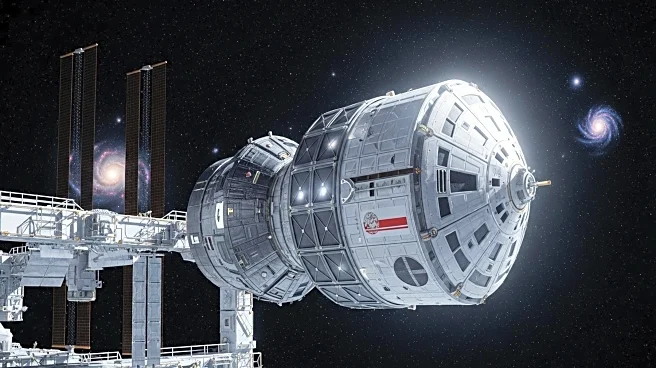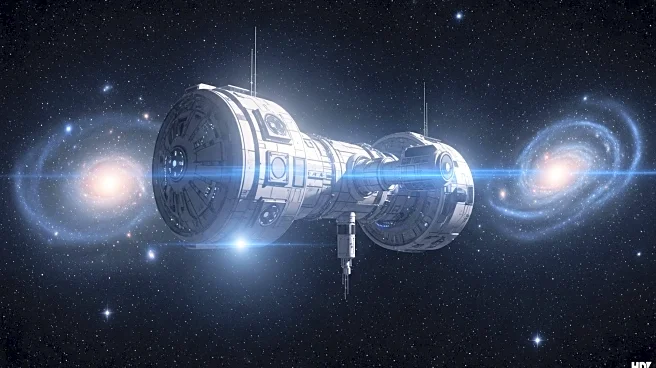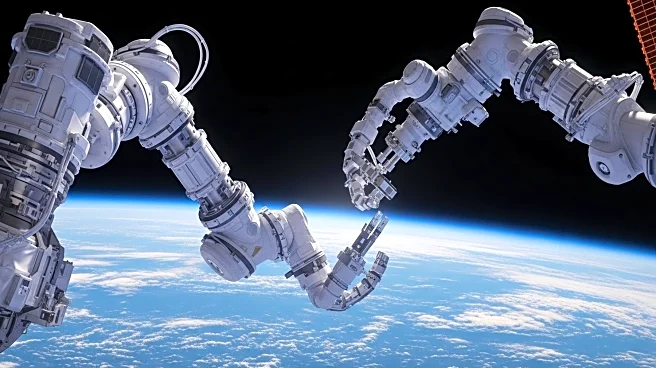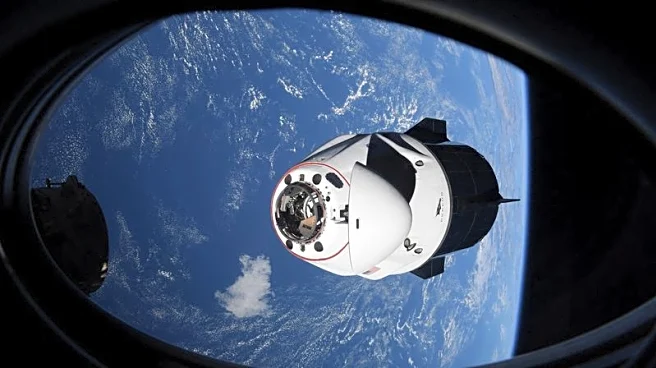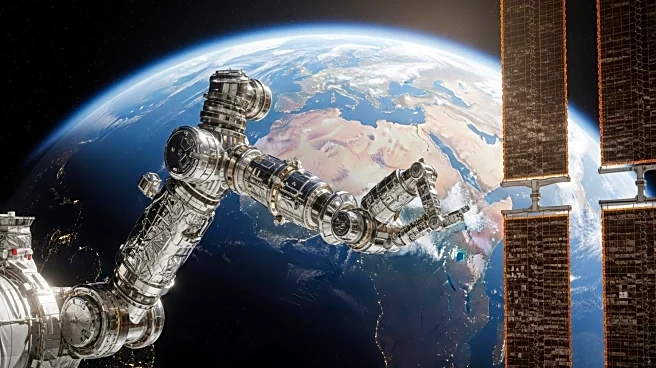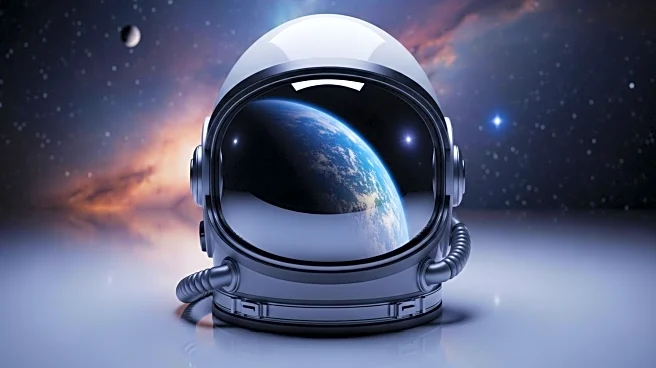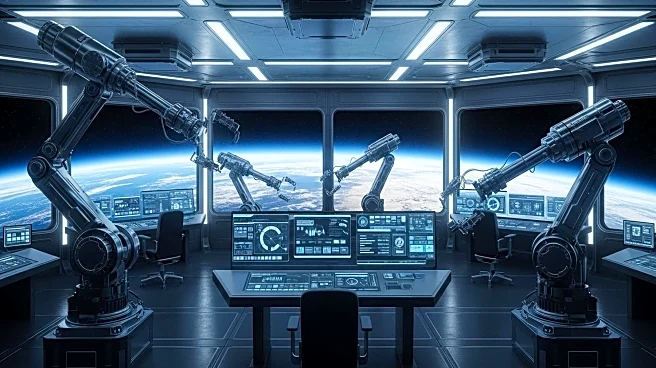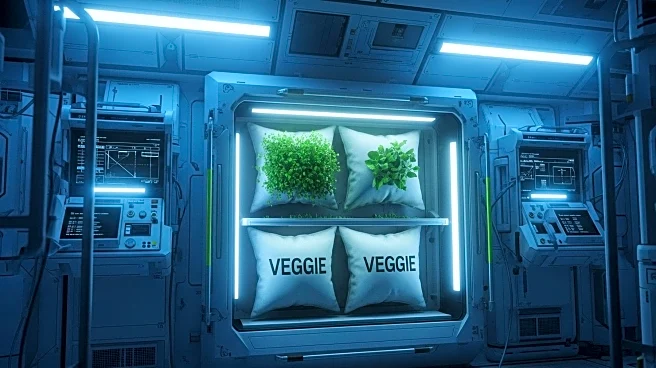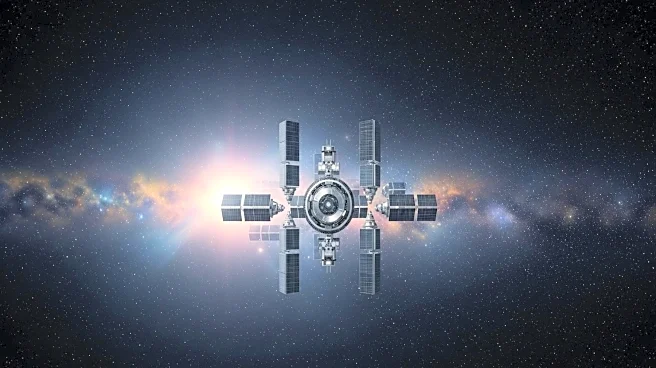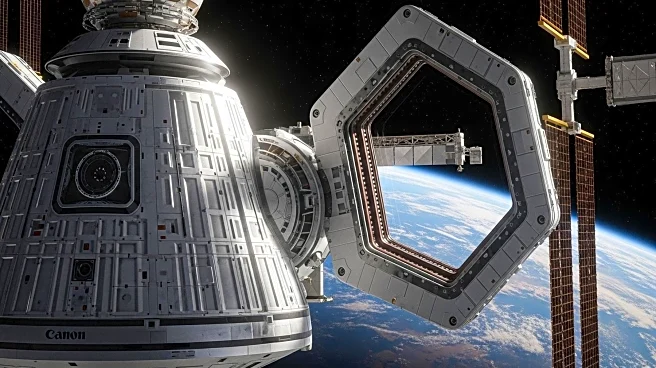What is the story about?
What's Happening?
NASA and SpaceX are gearing up for a series of cargo resupply missions to the International Space Station (ISS) this week. The Russian Soyuz will launch the Progress MS-32 spacecraft, followed by a Falcon 9 rocket carrying Northrop Grumman’s new Cygnus XL vehicle. The Cygnus XL is a stretched version of the previous model, allowing for more volume and up to 1,300 kg of additional mass to be transported to the ISS. Additionally, SpaceX will conduct a Starlink mission and two customer missions. The Falcon 9 will also launch the Tranche 1 Transport Layer B mission for the Space Development Agency, carrying 21 satellites to provide military data and connectivity worldwide.
Why It's Important?
These missions are crucial for maintaining the ISS's operations and supporting scientific research conducted in space. The introduction of the Cygnus XL vehicle represents a significant advancement in cargo capacity, enhancing the ability to deliver essential supplies and equipment to the ISS. The Tranche 1 Transport Layer B mission is part of a broader effort to enhance military communication capabilities, which is vital for national security. The successful execution of these missions will demonstrate the reliability and efficiency of current space transportation technologies, potentially influencing future space exploration and commercial endeavors.
What's Next?
Following these launches, the involved parties will monitor the missions' progress and ensure the successful delivery of cargo to the ISS. The outcomes of these missions could impact future collaborations between NASA, SpaceX, and other international space agencies. Additionally, the performance of the Cygnus XL and the Tranche 1 Transport Layer B mission will be evaluated to inform future developments in space transportation and military communication systems.
AI Generated Content
Do you find this article useful?
